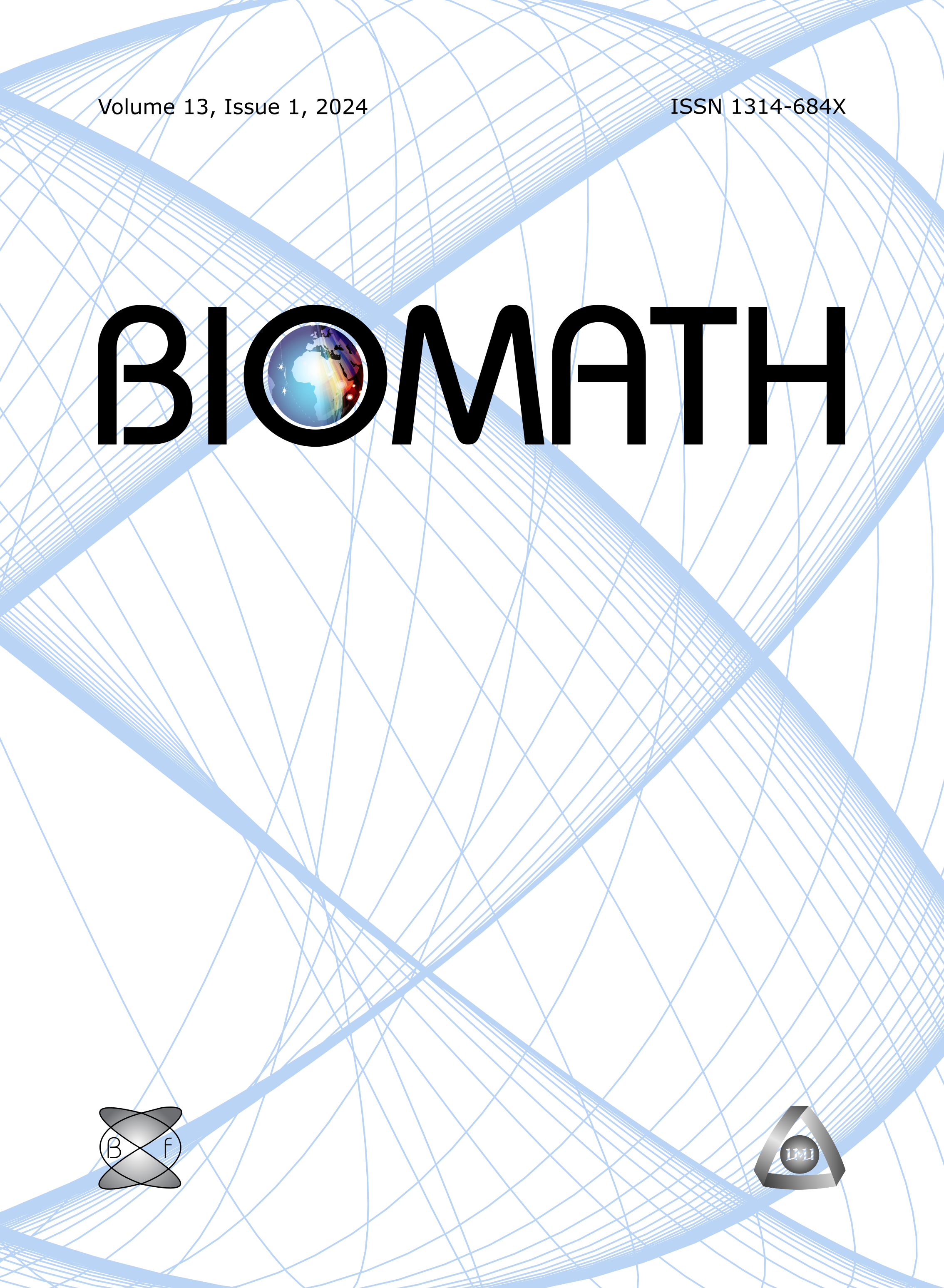Bifurcations in valveless pumping techniques from a coupled fluid-structure-electrophysiology model in heart development
DOI:
https://doi.org/10.11145/j.biomath.2017.11.297Keywords:
valveless pumping, heart development, immersed boundary method, fluid-structure interaction, mathematical biology, biomechanicsAbstract
We explore an embryonic heart model that couples electrophysiology and muscle-force generation to flow induced using a $2D$ fluid-structure interaction framework based on the immersed boundary method. The propagation of action potentials are coupled to muscular contraction and hence the overall pumping dynamics. In comparison to previous models, the electro-dynamical model does not use prescribed motion to initiate the pumping motion, but rather the pumping dynamics are fully coupled to an underlying electrophysiology model, governed by the FitzHugh-Nagumo equations. Perturbing the diffusion parameter in the FitzHugh-Nagumo model leads to a bifurcation in dynamics of action potential propagation. This bifurcation is able to capture a spectrum of different pumping regimes, with dynamic suction pumping and peristaltic-like pumping at the extremes. We find that more bulk flow is produced within the realm of peristaltic-like pumping.Downloads
Published
Issue
Section
License
The journal Biomath is an open access journal. All published articles are immeditely available online and the respective DOI link activated. All articles can be access for free and no reader registration of any sort is required. No fees are charged to authors for article submission or processing. Online publications are funded through volunteer work, donations and grants.
Authors who publish with this journal agree to the following terms:
- Authors retain copyright and grant the journal right of first publication with the work simultaneously licensed under a Creative Commons Attribution License 4.0 that allows others to share the work with an acknowledgement of the work's authorship and initial publication in this journal.
- Authors are able to enter into separate, additional contractual arrangements for the non-exclusive distribution of the journal's published version of the work (e.g., post it to an institutional repository or publish it in a book), with an acknowledgement of its initial publication in this journal.
- Authors are permitted and encouraged to post their work online (e.g., in institutional repositories or on their website) prior to and during the submission process, as it can lead to productive exchanges, as well as earlier and greater citation of published work (See The Effect of Open Access).

